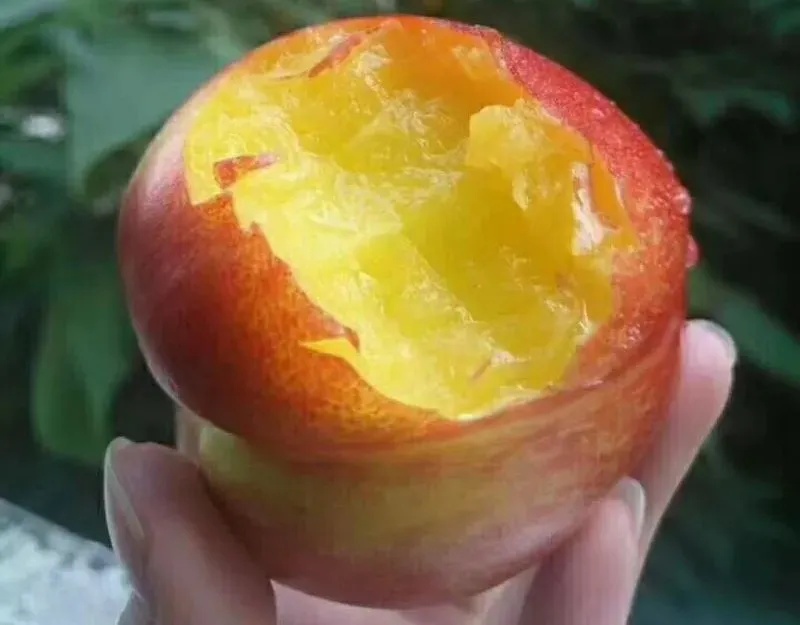An induction cooker, robot ... Is there no "pot qi" Chinese food, and is there a soul?
Author:Journal of China Science Time:2022.06.17
Text | "China Science News" reporter Zhang Wenjing
Recently, Los Angeles, California, has announced that in order to cope with climate change, most gas appliances will be prohibited from using new residential and commercial buildings in the city since 2023.
This was opposed by many Chinese food practitioners. They believed that for Chinese restaurants that rely on stir -fry and pay attention to "pot gas", the restaurant would be greatly affected by the use of gas furnaces.
At the same time, there are also Chinese food practitioners who hope to have scientific and technological innovation. They believe that such environmental protection policies may promote technology research and development and develop electric furnaces that can quickly reach high temperatures.
In the trend of carbon reduction, how can traditional Chinese food culture be affected? People hope to resolve contradictions in technological progress, so what changes do scientific and technological development bring to food culture?
"My only regret"
Without the fire, is Chinese food fragrant?
The crispy and tender taste, the flavor of fragrant, and the bright color, the color and fragrance of many traditional Chinese food cannot be left without frying.
If you use electricity to replace the gas and lose the bright fire, will the color and fragrance of Chinese food be greatly reduced? And what will this impact on Chinese food culture?
Yan Weixin, an associate researcher at the Institute of Robotics of the School of Mechanical and Power Engineering of Shanghai Jiaotong University, has been studying Chinese cooking robots for more than ten years.
The Chinese food cooking robots he developed are both useful and electromagnetic.
Judging from the comparison of robotic cooking, Yan Weixin said that in addition to the use of electromagnetic cooking, the "pot gas" of the dishes will indeed be reduced.
The pot qi is also called qi, which generally refers to frying the fire to make the food a better taste and taste.
Yan Weixin explained that because the electromagnetic is in the process of heating, there is a closed magnetic line in the middle of the induction cooker, and there is no way to heat it next to it. The gas has no problem.
But at the same time, Yan Weixin also said that cooking with electromagnetic also has advantages.
For Chinese cooking robots, it is more safe and controllable with electromagnetic heating.
"Because in different regions and different periods, the various indicators of gas may float, but the voltage is stable. After the voltage is calibrated, the capacitance strength of the robot is very easy to control. At the same time, the local heating of the electromagnetic electromagnetic is also local heating also. Make devices from being easily damaged. "
Regarding the color and fragrance of the dishes, Yan Weixin said that as long as the operations are stable in all aspects, whether it is gas cooking or electromagnetic cooking, the home -cooked dishes made by robots are actually not the difference between ordinary people.
One of the main research directions of Dong Jielin is the history of scientific and technological innovation, and also pays attention to the issue of scientific and technological innovation in daily life. She has lived in the United States for many years. She said that the gas furnace can be selected in American houses or the electric furnace.
In order to avoid more oil fume, Dong Jielin chose the electric furnace, and the daily cooking was not affected.
During the recent domestic residence, Dong Jielin has "unlocked" a lot of small kitchen electrical appliances, such as air fried pots, "it is easy to use."
In her opinion, carbon reduction may cause people to change some daily cooking habits, such as reducing the stir -fry and increasing cooking of oil fume. These changes are not bad.
"In fact, the most traditional cooking method of Chinese food itself is to cook, but fried food appears after the iron pot is popular."
Some people are pondering how to make delicious dishes with the same effect as bright fire cooking as an induction cooker. Shanghai famous chef Ren Defeng found the "antidote" of them. He abandoned the fire to change the electricity and explored the "best procedures" of the dishes made of seventy or eighty times.
"As long as the power, oil volume, fire time of fire, and boiling time of each dish, (induction cooker) is easier than Chinese stoves in the heat." Ren Defeng once told the media that Watshuki was accurate, closed and closed, and it was closed. Eyes can be done.
The key to the development of Chinese food cooking robots
It is pot sports and fire control
In addition to the trend of carbon reduction, in recent years, traditional Chinese food culture has become more fashionable and trendy under the blessing of technology. For example, some robots are restaurants in which chefs have attracted many people to eat.
Recently, in a small restaurant in Wen San Street, West Lake District, Hangzhou, there is a stainless steel robot "chef" for customers.
After the guests enter the store to scan the code, the robot "chef" will immediately open the furnace and heat oil. Use the robotic arm to take the ingredients, add seasoning, and stir fry until cooked. Can get three dishes.
At present, the store has 20 dishes to choose from.
Chinese cooking culture is vast and profound, involving a variety of craftsmanship such as fried, frying, cooking, frying, and cooking.
How is the robot done?
Yan Weixin introduced that the first step was to "learn from" to the real chef.
In order to learn and simulate the process and process of cooking chef's cooking, Yan Weixin has learned to cook for more than a month with the cooking chef from Yangzhou University. From the kitchen white from "water will not burn", it has become a home -cooked dish. The expert in the expert.
Of course, as researchers, "scripture" is by no means so simple to learn to cook.
At Yangzhou University, Yan Weixin learned in detail the division of Chinese food cooking technology, including speculation, steaming, boiling, stew, stew, fried, stew, stir -fry, burning, and then thoroughly learned the specific action processes under each process, and then chef The cooking process is refined and decomposed, and it becomes a movement that can be completed by a machine.
Yan Weixin asked the cooking master to lay off, such as where to put the tools and where to put it. After the layout, they recorded the specific actions, fire conditions, and the main ingredients, auxiliary materials, ingredients of ingredients in the cooking process, etc., thus obtained a "file" of the cooking process, and then encoded it into a machine language.
The key to the development of Chinese food cooking robots is pot sports and heat control. Through in -depth research on the movement of the chef's stove, Yan Weixin and others extracted various standardized movements of the pot.
On this basis, they carried out research on pots of pots, dynamic simulation analysis and optimization design.
In terms of fire control, Yan Weixin developed a dual -pressure strong fire control system and a fire visual module.
The former can accurately control the thermal load of the normal pressure burner, which is the key to realizing the digitalization and standardization of firepower control; the latter is based on machine vision technology, can monitor the color saturation of the ingredients in real time, and regulates the strength of the firepower and cooking time accordingly. Essence
Through the fuzzy control of the fire, the dual -pressure strong fire control system is coordinated with the fire visual module, so that the production of dishes is strong, the color and taste are consistent.
It can be seen that the development of Chinese food cooking robots is not easy. Yan Weixin said that researchers in this field need to have a variety of professional knowledge, including cooking, mechanical manufacturing and robotics research, control algorithm research, fluid mechanics and the professional background of thermal field, and so on.
In 2006, Yan Weixin followed the doctorate instructor to make the first cooking robot in China, and then after years of improvement and improvement.
In more than ten years, because of the continuous trial, Yan Weixin laughed and said that he had eaten 190 pounds from 140 pounds.
At present, Yan Weixin's team is promoting the application of highly safe and small portable household cooking robots. Perhaps the technology in this field will greatly change the method of cooking in the family.
In Yan Weixin's view, the research of Chinese food cooking robots helps to inherit Chinese food culture.
"We cooperate with many cooking masters such as Huaiyang cuisine Zhou Xiaoyan and other cooking masters. By reappearing the processes such as cooking ingredients, stove movements, and heat control, the standardization records are converted into robotic control procedures, and the cooking skills of the master of replication and inheritance are ","
At the same time, Chinese cooking robots are also conducive to the spread of Chinese food culture around the world.
"Robotics can achieve standardization of Chinese food cooking. At the same time, it is easier for robots to enter various countries than chefs, thereby promoting Chinese food culture." Yan Weixin said.
How does Chinese food cooking robot taste? Yan Weixin feels that in the case of good meals, the general dishes made by robots are close to the works of cooking masters.
Science and technology development and food culture
The complex relationship is beyond imagination
If scientific and technological innovation and food culture are placed in a longer -scale history, you will find that not only the development of science and technology will affect the food culture, but also the food culture also affects the development of science and technology.
Dong Jielin is currently a part -time researcher at the China Science and Technology Policy Research Center of Tsinghua University. In his book "A Brief History of Human Science and Technology Innovation: The Power of Desire", he wrote a case of influence of food culture and technological innovation.
The book reads that the modern world is divided into two major staple food camps -grain and noodles. The grain family is centered on the birthplace of domestication rice, southern China, and rice is the most important staple food. The powder of the noodles is centered on West Asia, the earliest domestication place of wheat, and flour is the most important staple food.
In principle, wheat grains can also be cooked and rice can also be worn, but why people in the wheat area prefer to grind wheat into powder, and people in the rice area prefer rice?
In Dong Jielin's view, the development of people's staple food habits is related to the technical environment of the early farming society. One of the key technical products is pottery.
Specifically, southern China is the birthplace of wild rice. Thousands or even tens of thousands of years ago, which was domesticated by rice, a pottery was invented here.
It is convenient to cook rice with pottery, so there is no need to grind rice into powder to eat more.
As a result, the use of pottery and the planting of rice slowly solidified into a living habit.
West Asia's wheat domestication and planting time have been used for thousands of years earlier than pottery.
In other words, the pottery appears after thousands of years when the farming society and the local people have developed a staple food habit.
In the days without pottery, it is much effortless to boil wheat grains than grilling flour into cakes.
Dong Jielin also speculated that a possibility may be because people in West Asia have become accustomed to roasting cakes made by flour during the Paleolithic era, and they are not rushing to invent pottery.
Therefore, in terms of pottery use, West Asia is lagging behind China and East Asia for a long time.
In Dong Jielin's view, people's dietary habits for wheat and rice may be a reason why there is no dynamic revolution in China.
The northwest of China is a wheat area, and the southeast is the rice area.
The grinding noodles and rice rice are the daily labor of people in the two areas, but the workload of the grinding noodles is much larger than that of rice rice.
However, the water resources in northwestern China are not abundant, and there are no natural conditions to build a lot of hydraulic machinery. Therefore, although the noodles work is heavy, it still depends mainly on animal power and manpower.
In the southeast of China with rich water resources, the work of rice rice is not heavy, and it can be completed with small tools.
In addition, the population in the southeast is densely populated, especially after the Ming Dynasty, the rapid growth of the population, low labor costs, and lack of economic power of invention and use of hydraulic machinery. Therefore, although China has invented hydraulic machinery earlier, the application is not wide.
Imagine if the rice family chooses to eat and eats the wheat family. Is the development history of China's power system and the history of the industrial revolution that may be rewritten?
Of course, this is just a speculation, it is difficult to verify. But it reminds us that the relationship between food culture and scientific and technological innovation may be more complicated than imagined.
"China Science News" (2022-06-17 The 4th edition of the original title "Carbon reduction trend, what the science and technology blessing will bring to traditional Chinese food")
Edit | Zhao Lu
Capture | Guo Gang

- END -
Linzi: The oil peach in Guandao Village is familiar!

At the beginning of the midsummer, the long -awaited Taigongyuan of the people of ...
The 4 "conscience" liquor in my country is full of wine, but it is ignored because of the humble packaging.

The 4 conscience liquor in my country is full of wine, but it is ignored because o...